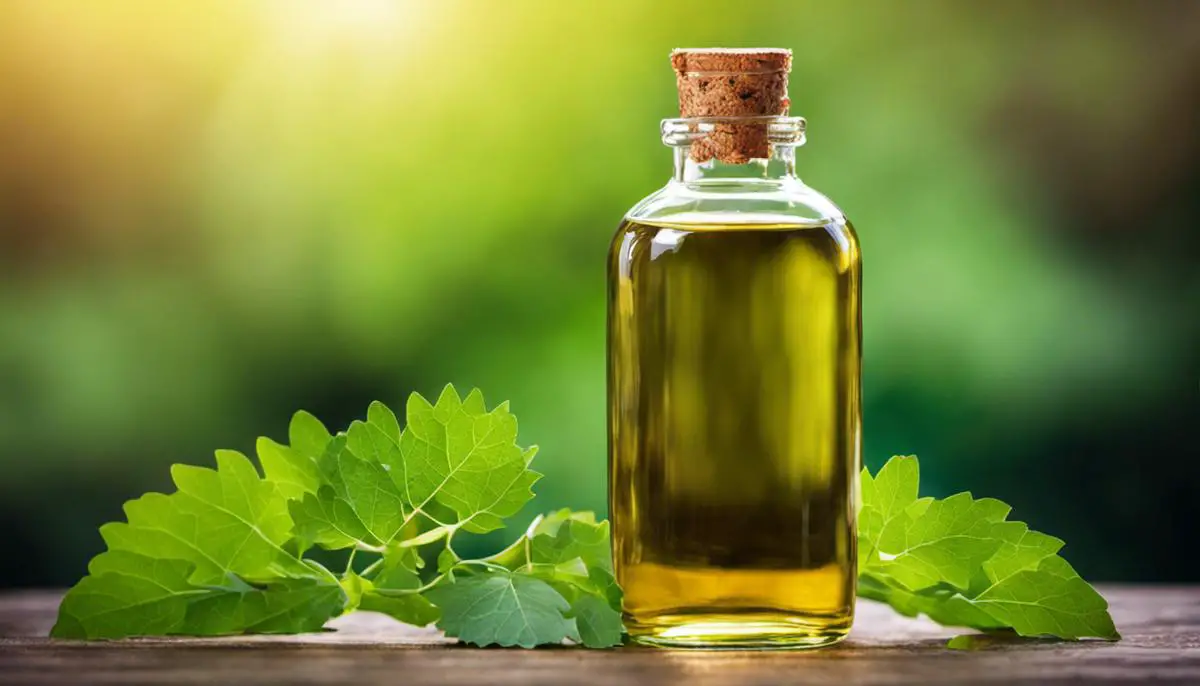Rich in essential fatty acids, packed with natural nutrients, and boasting a history of beneficial use, Castor Oil is emerging as a skincare savior in the endless ocean of artificial products and chemicals. Reflecting nature’s brilliance, this amazing substance, derived from the seeds of the castor plant (Ricinus communus), offers a wide range of skin benefits. More than just providing a temporary fix, it reaches deep into the skin, nourishing and rejuvenating it from within. Through understanding its origins, extraction process, and essential constituents, we can begin to appreciate the unique properties that make castor oil such a valuable addition to a holistic approach to skincare.
Understanding Castor Oil
Origins and Extraction of Castor Oil
Castor Oil, a pale yellow fluid known for its numerous benefits, is extracted from the seeds of the Ricinus Communis plant. Native to the Mediterranean, East Africa, and India, this plant produces vividly glossy seeds that have been harvested for centuries due to their oil-rich content. The extraction process includes pressing the seeds until they release their valuable oil. It’s this cold-pressed, nutrient-rich oil that offers a variety of health benefits, particularly for skin care.
Specific Properties for Skin Care
The properties of castor oil make it an ideal ingredient for skin care. It’s a rich source of ricinoleic acid, a monounsaturated fatty acid that acts as a humectant, helping the skin retain moisture. Its viscosity makes it a perfect carrier oil, helping to deliver nutrients deep into the skin. Castor oil also boasts of potent antimicrobial properties that can protect your skin from bacterial infections.
Natural Constituents of Castor Oil
Castor oil is packed with natural constituents that confer various health benefits. Of its constituents, fatty acids stand out the most – with about 90% of their makeup being ricinoleic acid. Other fatty acids present include oleic acid, linoleic acid, and alpha-linolenic acid. These fatty acids, particularly ricinoleic acid, are renowned for their anti-inflammatory properties.
Impacts of Castor Oil’s Constituents
The impact of these constituents on the skin is as beneficial as it is diverse. The fatty acids, apart from their exceptional moisturising character, aid in enhancing smoothness and softness when the oil is applied to the skin. They also stimulate the growth of healthy skin tissue, reducing the appearance of blemishes and scars over time. The anti-inflammatory benefits of the fatty acids can help soothe irritated or inflamed skin, making castor oil beneficial for treating conditions like acne or dermatitis.
Thus understanding the origins, extraction process, natural constituents and their impact helps one comprehend why castor oil has a cherished status in skin care routines.
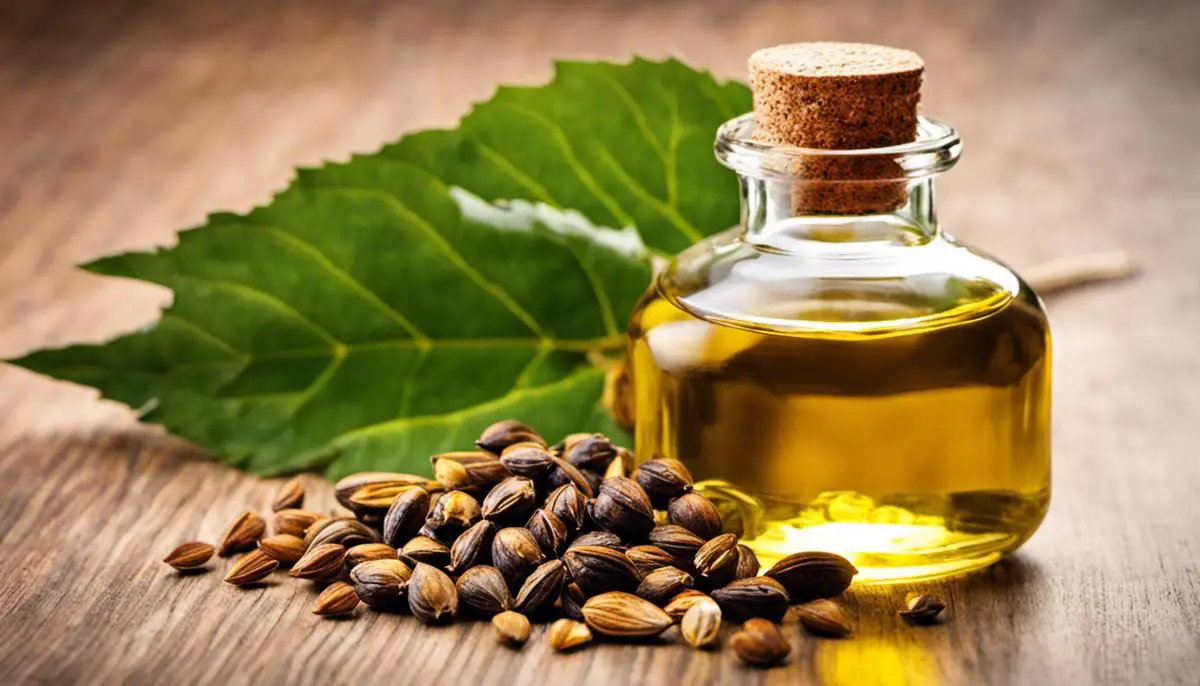
Benefits of Castor Oil for Skin
Skin Nourishment with Castor Oil
Castor oil, derived from the seeds of the Ricinus Communis plant, is rich in antioxidants, vitamins, and fatty acids that serve as skin superfoods. These nutrients deeply penetrate the skin, hydrating and nourishing it from within. As a result, castor oil helps retain skin’s moisture, giving your skin a softer, suppler appearance.
Soothing Effects of Castor Oil
Castor oil’s soothing properties can provide relief for inflammatory skin conditions. The omega-3 fatty acids in the oil aid in minimizing irritation, redness, and inflamed skin. These benefits make castor oil a go-to remedy for conditions like dermatitis and psoriasis.
Castor Oil for Acne Treatment
Castor oil is known to assist with acne management due to its anti-inflammatory and antimicrobial qualities. The oil helps to unclog pores when used correctly, reducing the buildup of oils and bacteria that can result in acne breakouts. Its ricinoleic acid content can also combat acne-causing bacteria.
Reducing Skin Pigmentation with Castor Oil
Rich in omega-3 fatty acids, castor oil promotes skin health by stimulating the growth of new, healthy skin tissue, helping to reduce pigmentation. Its high concentration of fatty acids can also help to displace the pigmented, dead skin cells, thereby reducing the appearance of spots and marks.
Castor Oil for Aging Signs
Another notable benefit of castor oil for skin relates to anti-aging. It offers an effective, natural solution for fine lines, wrinkles, and other signs of aging. The oil penetrates into the skin and stimulates collagen production, which hydrates and maintains skin elasticity. The increased collagen and elastin production helps in reducing signs of aging, giving a youthful appearance.
Healing Capabilities of Castor Oil
Beyond nourishment and protection, castor oil is also reputed for its healing properties. Its ricinoleic acid content exhibits promising wound-healing effects, facilitating the growth of new cells and thus, quickening the healing process. This makes it valuable in addressing sunburn, cuts, and other minor skin abrasions. It’s also incredibly effective in soothing dry, chapped skin, while providing necessary hydration.
In conclusion
The benefits of castor oil for skin are abundant, making it a worthy addition to your skincare routine. However, like any skincare product, it’s essential to perform a patch test before regular use to ensure that you don’t have any adverse reactions.
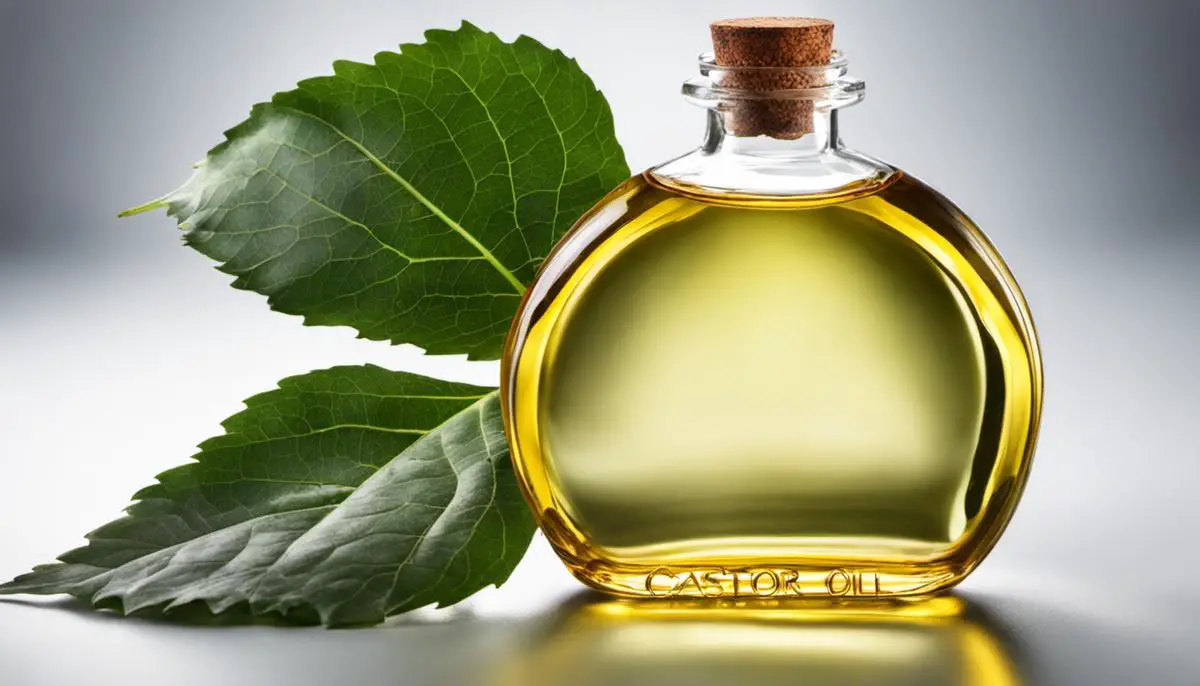
Potential Risks of Using Castor Oil
Potential Risks of Castor Oil for Skin
As with many natural and synthetic skincare products, castor oil usage comes with potential risks and side effects. The primary risk associated with castor oil is an allergic reaction. Symptoms of an allergic reaction to castor oil can include skin rash, itching, swelling, redness, or difficulty breathing. These reactions can occur in individuals who have sensitivity or allergy to castor oil as a result of their immune system attempting to fight off the “threat.”
Skin Types and Castor Oil
Different skin types can react differently to castor oil. For instance, those with oily skin might find that castor oil, which is quite thick and can be greasy, exacerbates their skin condition. Contrastingly, those with dry skin might experience moisturizing benefits, since the rich oil can help to prevent moisture loss. Individuals with sensitive skin, meanwhile, might experience irritation and redness due to the oil’s potential to act as a skin allergen.
Signs of an Allergic Reaction
Spotting an allergic reaction early can help prevent a small problem from escalating into a more serious situation. For people using castor oil on their skin, it’s crucial to know what signs to look for. Symptoms of an allergic reaction might include redness, swelling, itchiness, blistering, or a rash. More severe symptoms can emerge in some individuals, such as difficulty breathing or swallowing, dizziness, or a rapid heartbeat. If any of these symptoms appear, immediate medical attention should be sought.
The Importance of a Patch Test
Because of these potential risks, it’s widely recommended to perform a patch test before using any new skincare product, including castor oil. A patch test involves applying a small amount of the product on a discrete area of the skin, such as the inside of the arm, and waiting for 24 hours to observe for any adverse reactions. If no signs of irritation or allergic response are detected after this period, it’s generally safe to proceed with using the product on a broader skin area. This test can help to detect potential allergic reactions before they occur on a larger, more noticeable area of the skin.
In Conclusion
While there are potential benefits to using castor oil for skincare, it’s important to be aware of the risks, particularly for those with sensitive skin or known allergies. A patch test should always be conducted before full application to the skin. If any adverse reaction occurs during or after applying castor oil, use should be discontinued immediately, and a healthcare professional should be consulted.
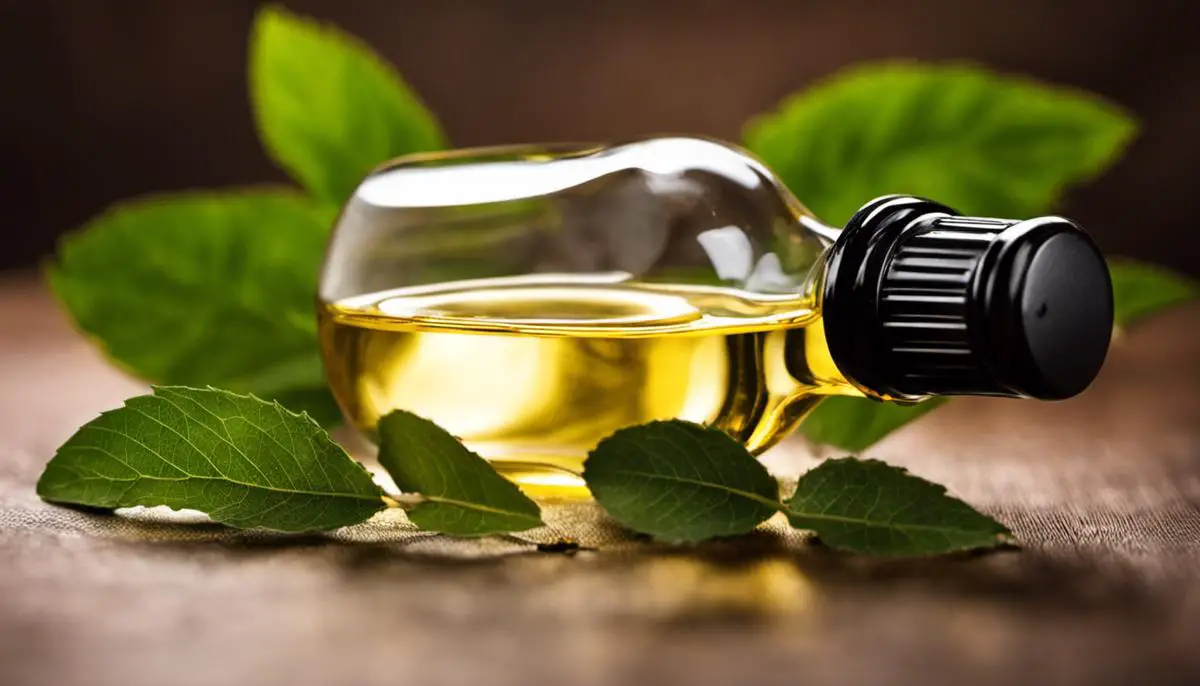
Practical Application of Castor Oil for Skin
Understanding Castor Oil
Castor oil is a multi-purpose vegetable oil that’s derived from the plant Ricinus communis. It boasts anti-inflammatory and antibacterial properties, making it a welcomed addition in many skincare routines. Castor oil is high in vitamin E, proteins, minerals, and beneficial fatty acids. It can help boost overall skin health and treats several skin conditions.
Selecting the Right Castor Oil
To reap the maximum skincare benefits, you should opt for a 100% pure, organic, and cold-pressed castor oil. Cold-pressed means the oil is mechanically pressed from the castor seeds without heat or chemicals, thus preserving its natural healing properties. Make sure that it’s hexane-free, as hexane is a chemical that can harm your skin.
Applying Castor Oil
For a straightforward use of castor oil on your skin, start by cleaning your face with warm water which will help open up the pores. Take a few drops of castor oil into your palm and rub your hands together to warm the oil. Gently massage it onto your face in circular motions. Wipe off any excess oil with a clean towel.
Required Quantity
When using castor oil for the first time, start with a small amount, using just a few drops. This will allow you to monitor how your skin reacts. For large areas such as the legs or arms, you may require up to a teaspoon. Remember, it’s better to use too little and add more later than to use too much in the beginning.
Combining Castor Oil with Other Products
Castor oil pairs well with various other carrier oils which can enhance its effectiveness. Some combinations include mixing equal parts of castor oil and coconut oil, which can create a powerful anti-acne treatment. You can also mix castor oil with almond oil for an excellent anti-aging solution due to their rich vitamin E content.
Best Practices
While using castor oil, it’s important to remember that consistency is key. For noticeable results, make sure to use it regularly in your skincare routine either once or twice daily. Yet, it’s always crucial to monitor your skin’s reaction. If there is any sign of irritation or allergic reactions, stop using it immediately and consult a dermatologist.
The Precaution
While castor oil is generally safe for topical use, it is always advisable to do a patch test. Apply a small amount on your inner arm and wait for 24 hours. If there is no adverse reaction, you can safely integrate castor oil into your skincare routine.
The use of castor oil for skincare is an effective and natural way to promote skin health. It is suitable for all skin types and can be effortlessly incorporated in various skincare routines.
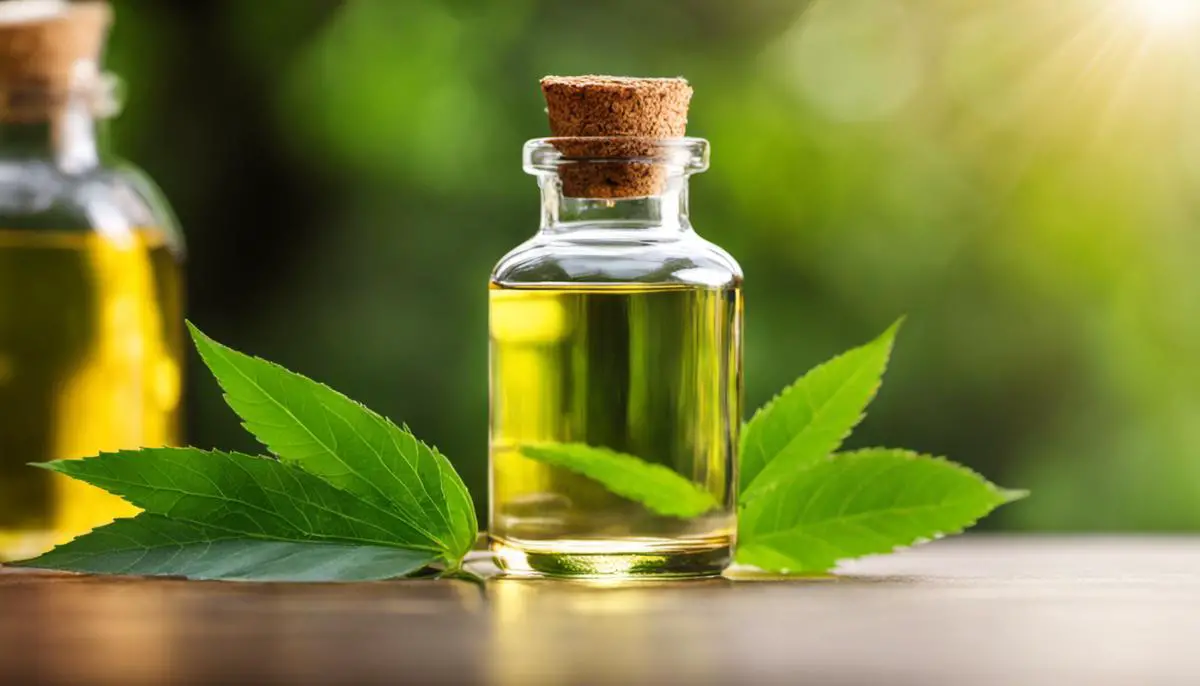
Indeed, castor oil sets a benchmark for natural skin care that few can match. The wealth of benefits it offers, from treating common skin ailments to enhancing the natural beauty and health of the skin, is simply astounding. However, while it’s a potent instrument for skin health, one must be aware and understanding of the potential risks, including possible allergic reactions. Testing it before fully incorporating it into your skincare regimen is crucial to safe usage. But once understood and used right, there’s no telling the wonders castor oil can evoke on your skin. As with life, the key is balance. So here’s to a happier, healthier skin naturally!
